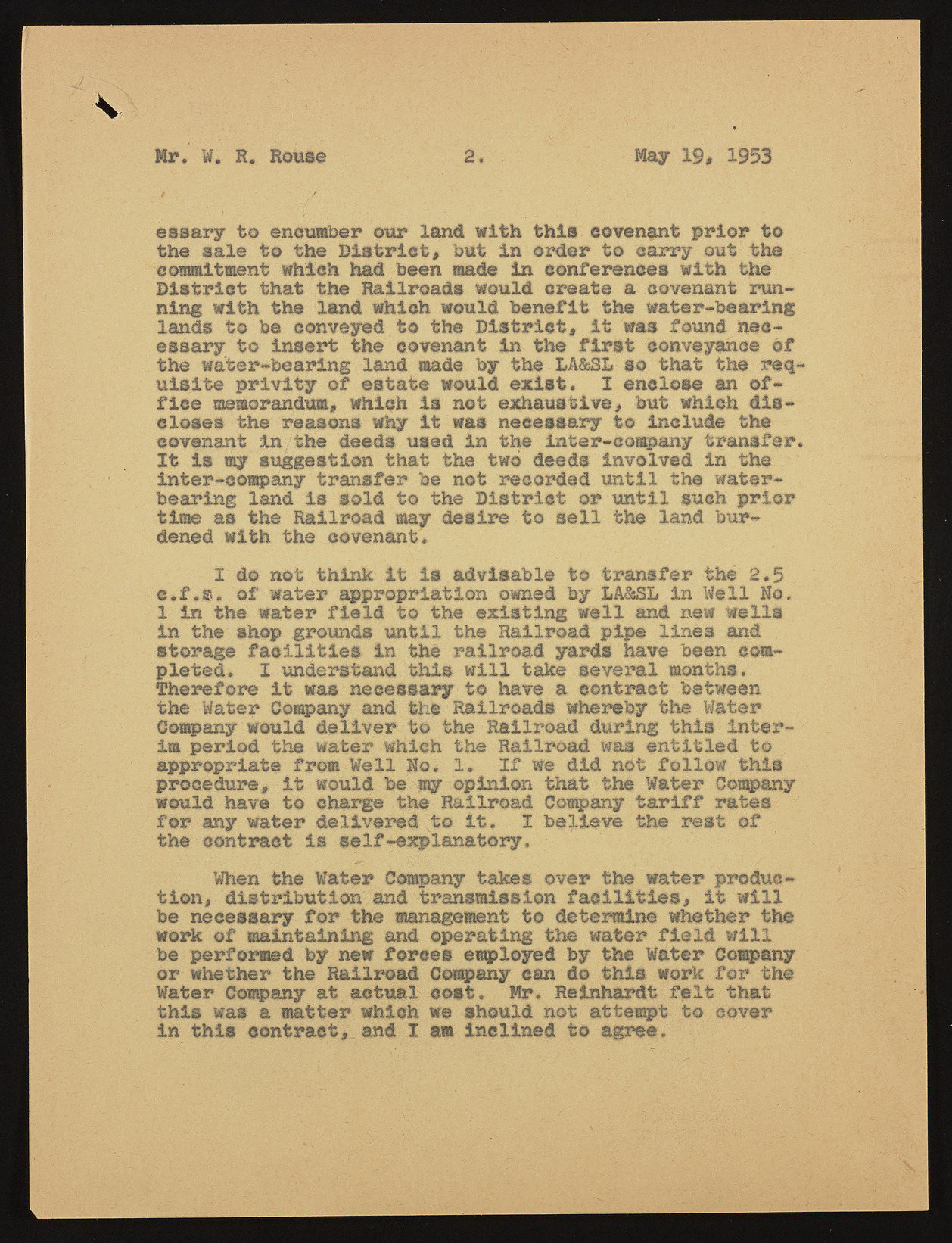Copyright & Fair-use Agreement
UNLV Special Collections provides copies of materials to facilitate private study, scholarship, or research. Material not in the public domain may be used according to fair use of copyrighted materials as defined by copyright law. Please cite us.
Please note that UNLV may not own the copyright to these materials and cannot provide permission to publish or distribute materials when UNLV is not the copyright holder. The user is solely responsible for determining the copyright status of materials and obtaining permission to use material from the copyright holder and for determining whether any permissions relating to any other rights are necessary for the intended use, and for obtaining all required permissions beyond that allowed by fair use.
Read more about our reproduction and use policy.
I agree.Information
Digital ID
Permalink
Details
More Info
Rights
Digital Provenance
Publisher
Transcription
Mr. W. R. Rouse 2 , May 19, 1953 / esBary to encumber our land with this covenant prior to the sale to the District, but in order to carry out the commitment which had been made in conferences with the District that the Railroads would create a covenant running with the land which would benefit the water-bearing lands to be conveyed to the District, it was found necessary to insert the covenant in the first conveyance of the water-bearing land made by the LA&SL so that the requisite privity of estate would exist. I enclose an office memorandum, which is not exhaustive, but which discloses the reasons why it was necessary to Include the covenant in the deeds used in the inter-company transfer. It is ray suggestion that the two deeds involved in the inter-company transfer be not recorded until the waterbearing land Is sold to the District or until such prior time as the Railroad may desire to sell the land burdened with the covenant. I do not think it is advisable to transfer the 2.5 c.f.s. of water appropriation owned by LA&SL in Well No. 1 in the water field to the existing well and new wells in the shop grounds until the Railroad pipe lines and storage facilities in the railroad yards have been completed. I understand this will take several months. Therefore it was necessary to have a contract between the Water Company and the Railroads whereby the Water Company would deliver to the Railroad during this interim period the water whieh the Railroad was entitled to appropriate from Well No, 1. If we did not follow this procedure, it would be ray opinion that the Water Company would have to charge the Railroad Company tariff rates for any water delivered to it. I believe the rest of the contract is self-explanatory. When the Water Company takes over the water production, distribution and transmission facilities, it will be necessary for the management to determine whether the work of maintaining and operating the water field will be performed by new forces employed by the water Company or whether the Railroad Company can do this work for the Water Company at actual cost. Mr. Reinhardt felt that this was a matter which we should not attempt to cover in this contract, and I am inclined to agree.

